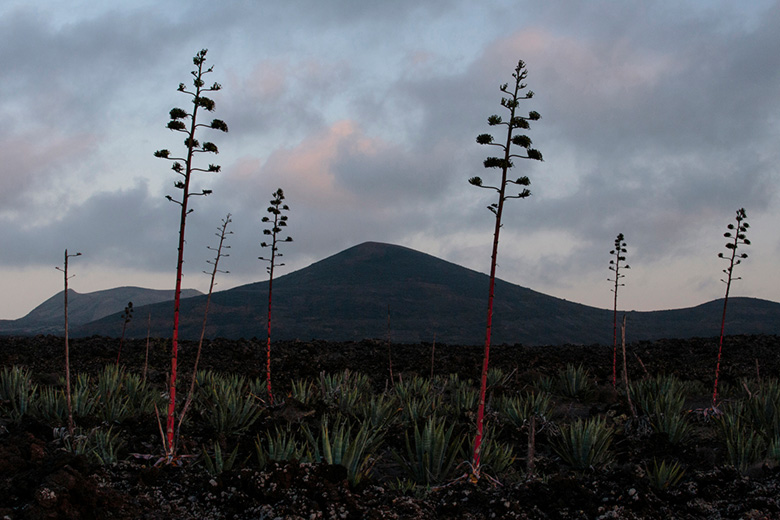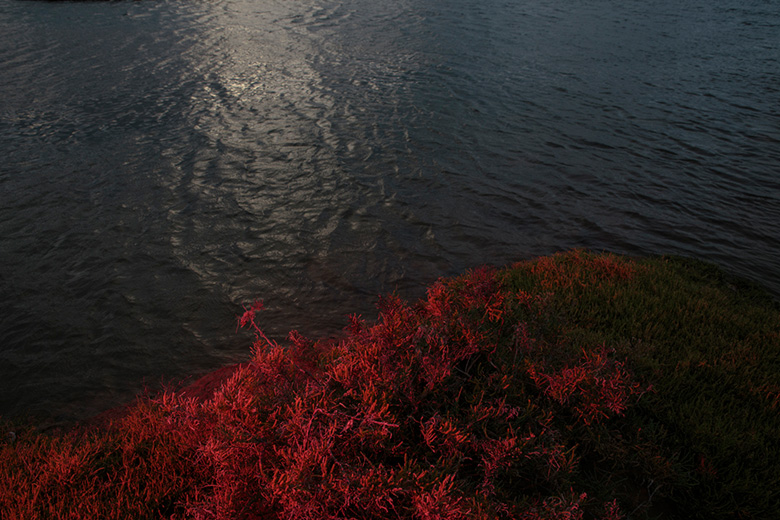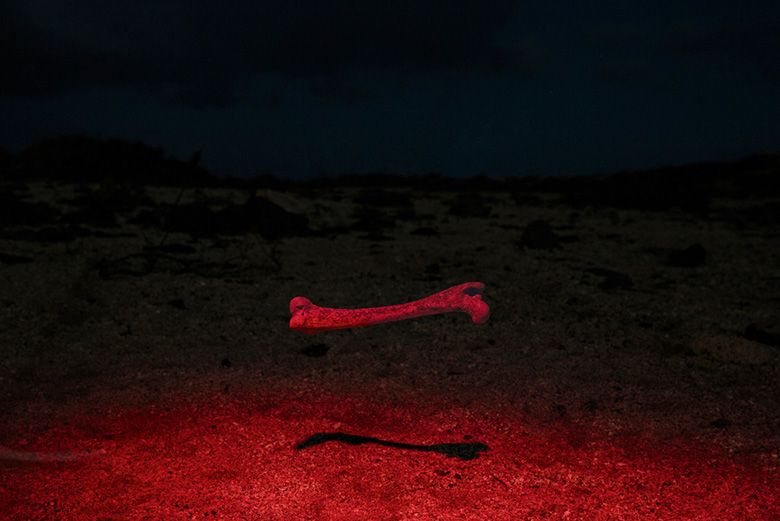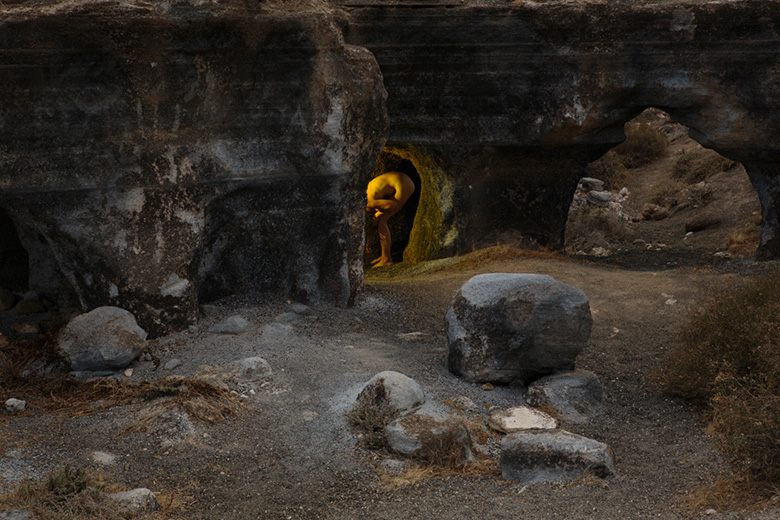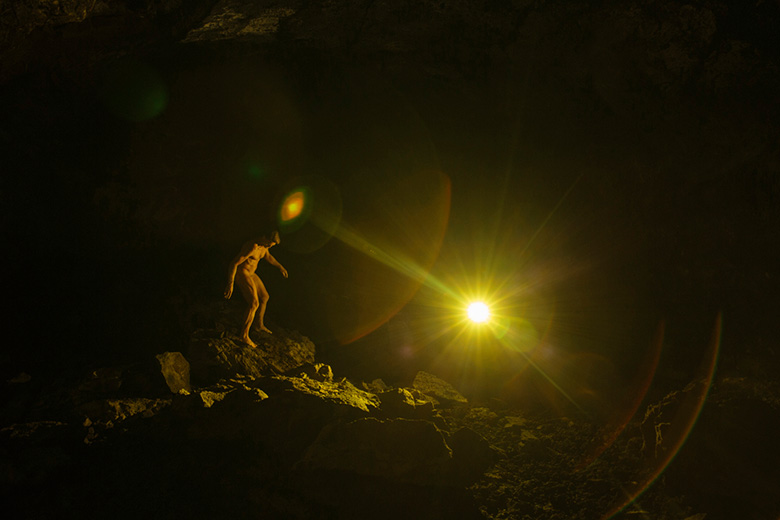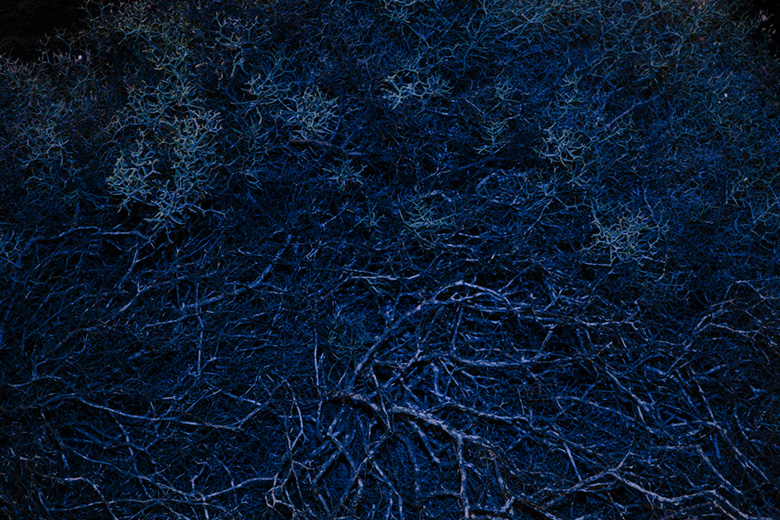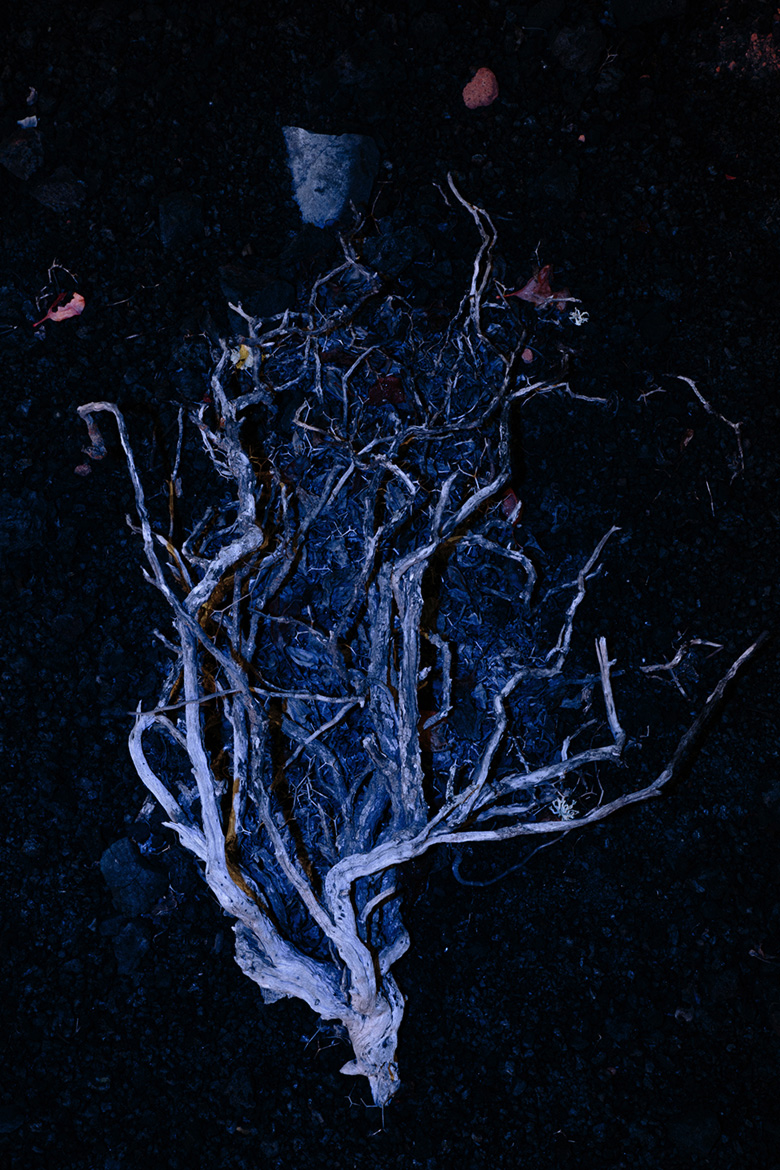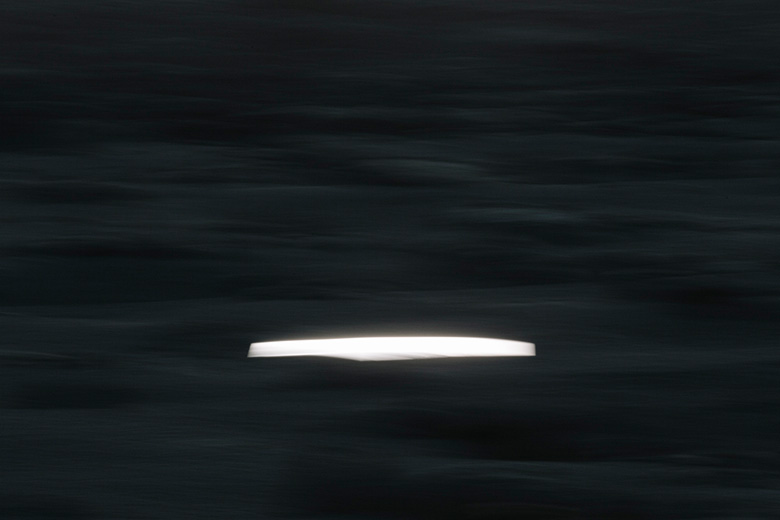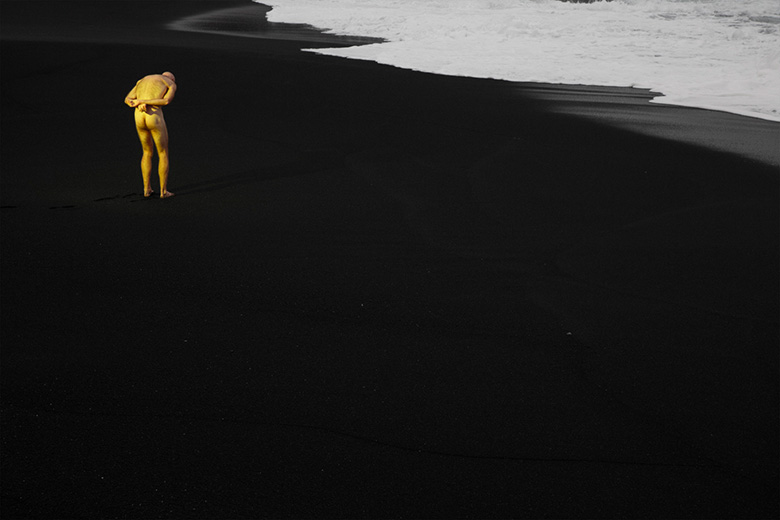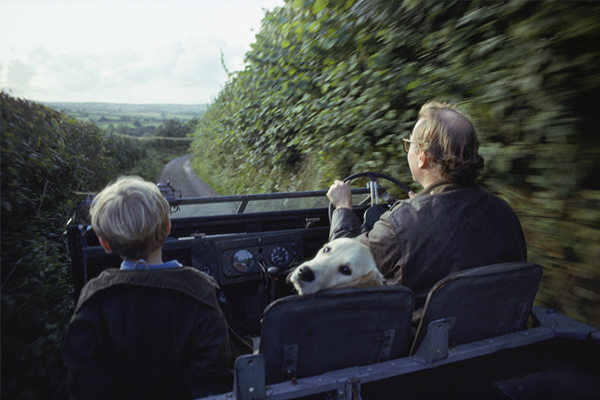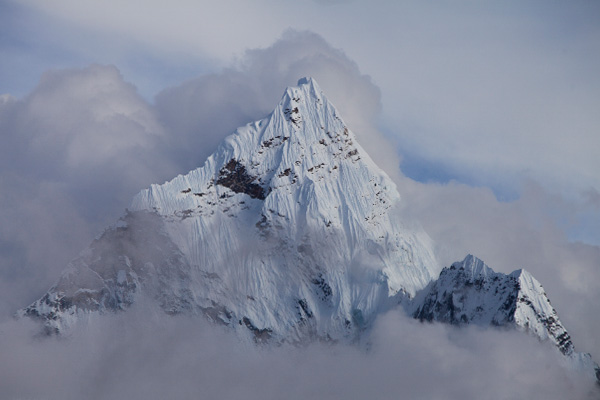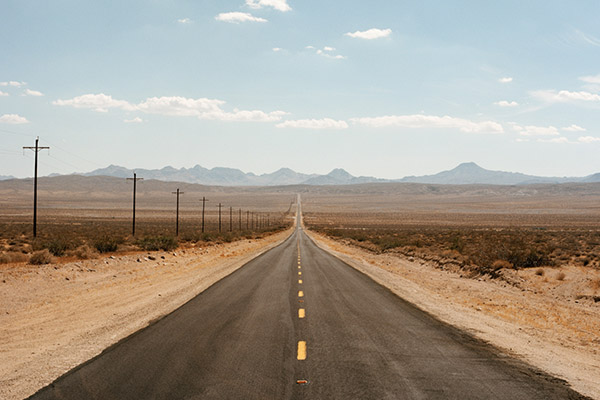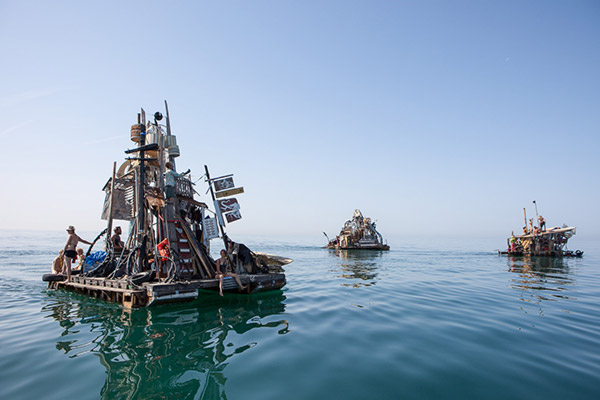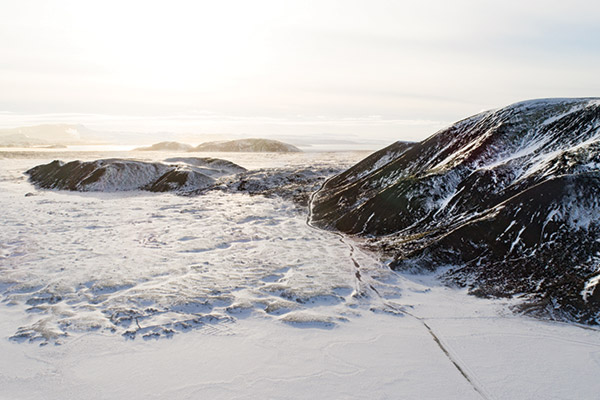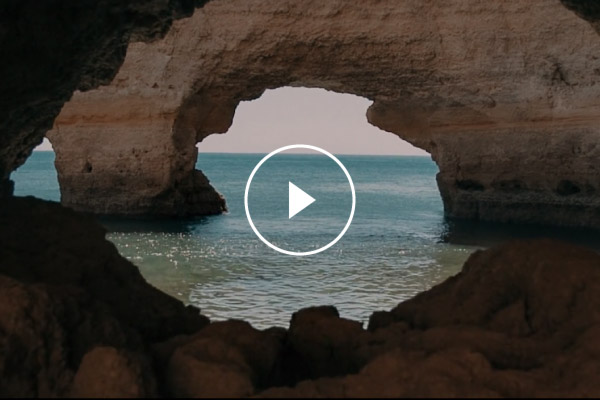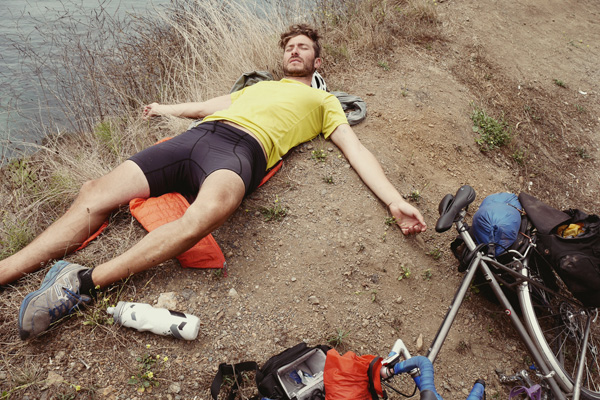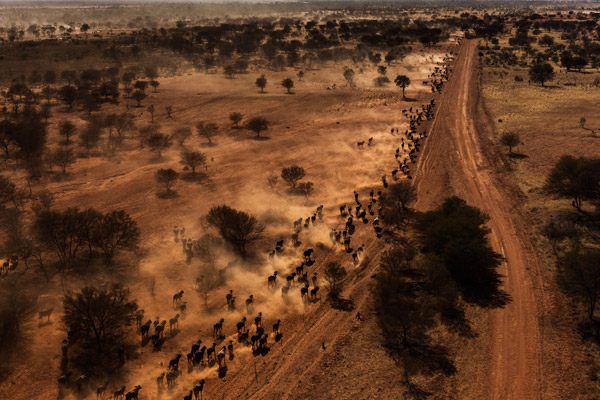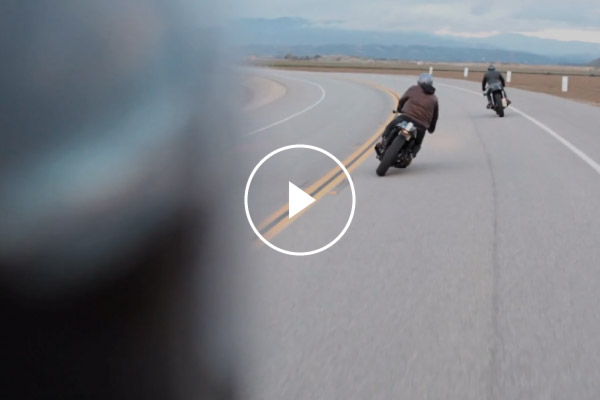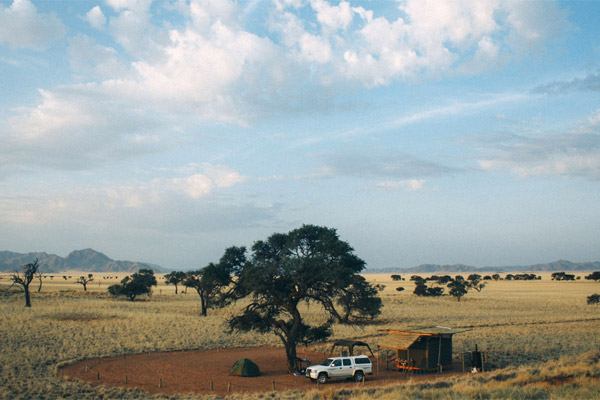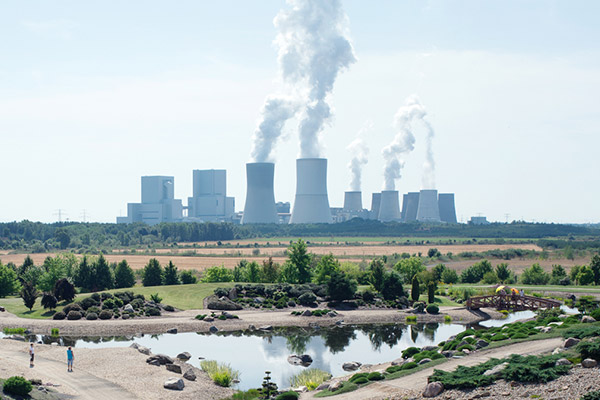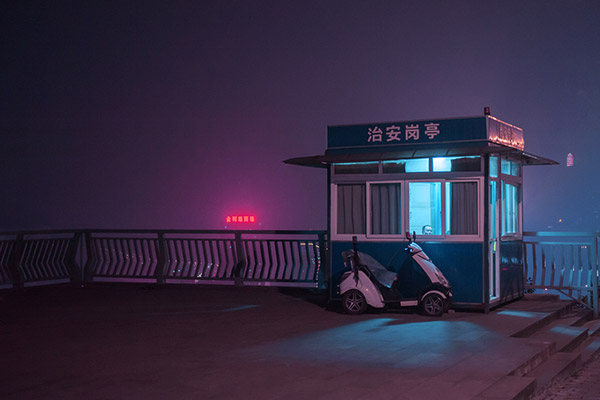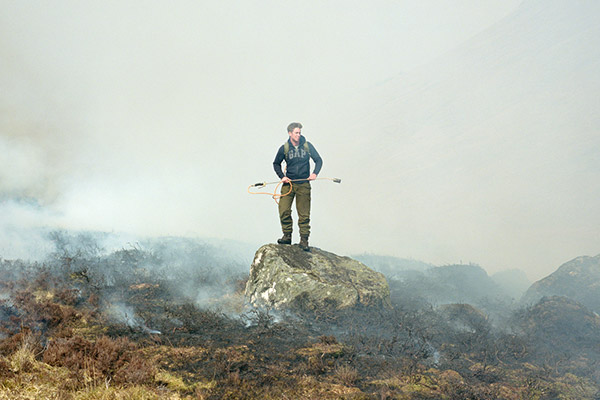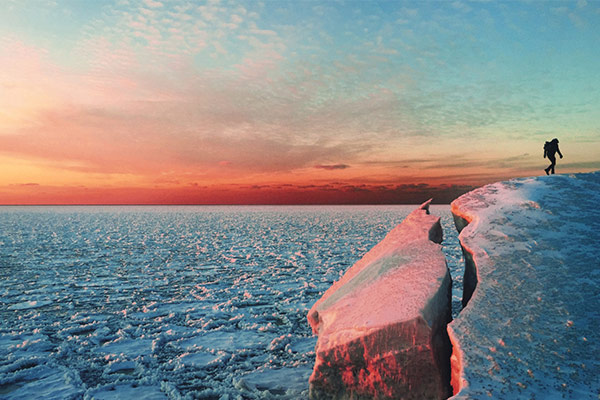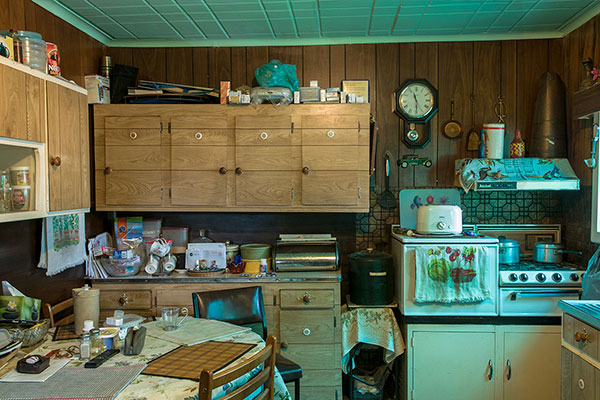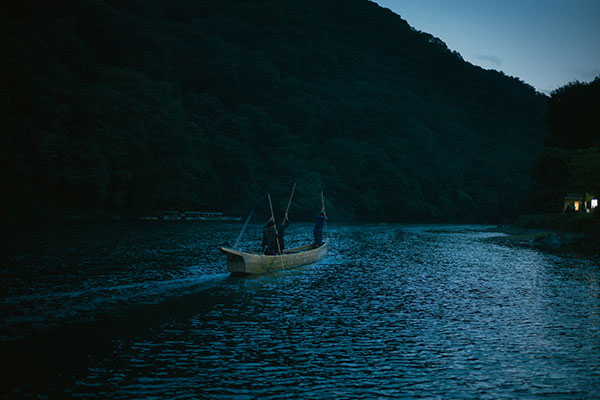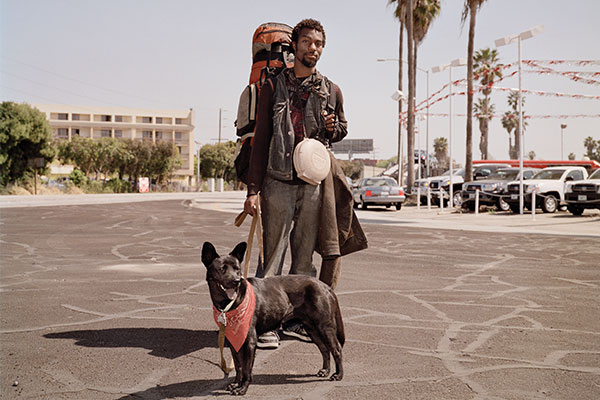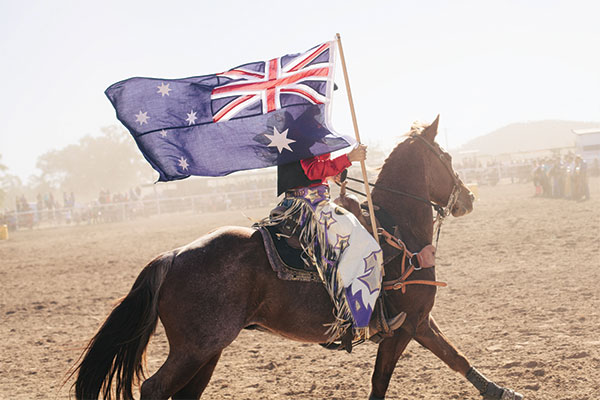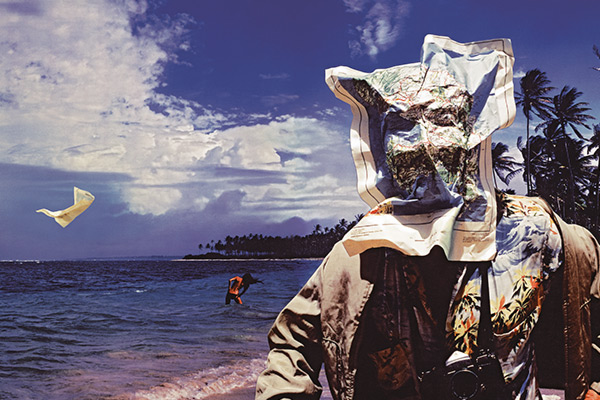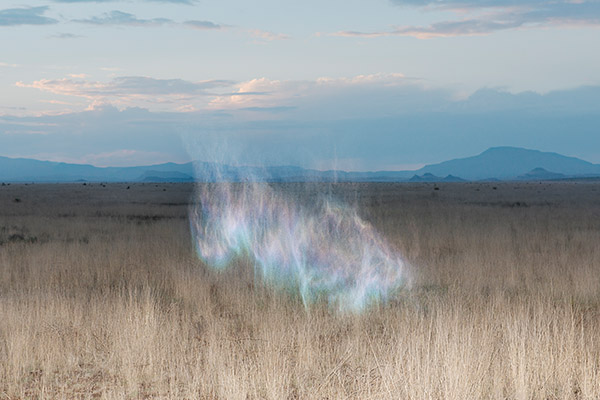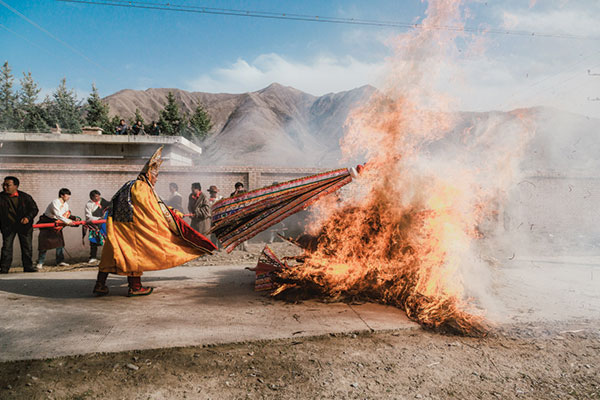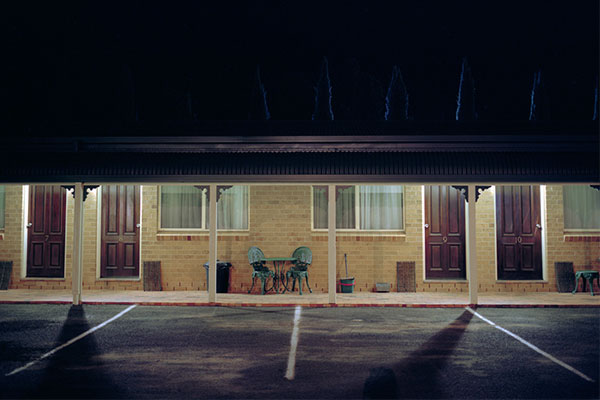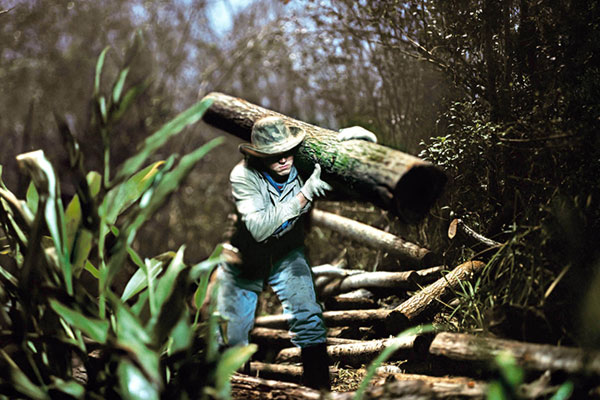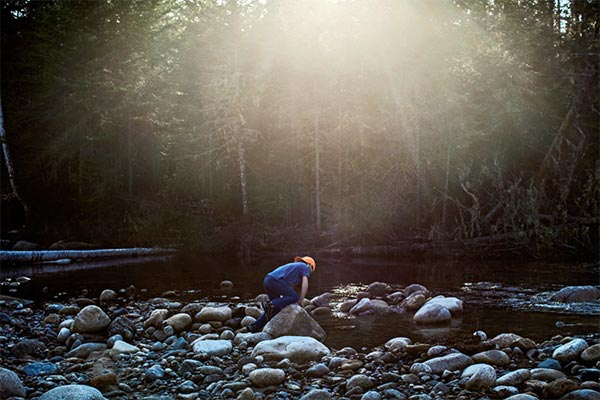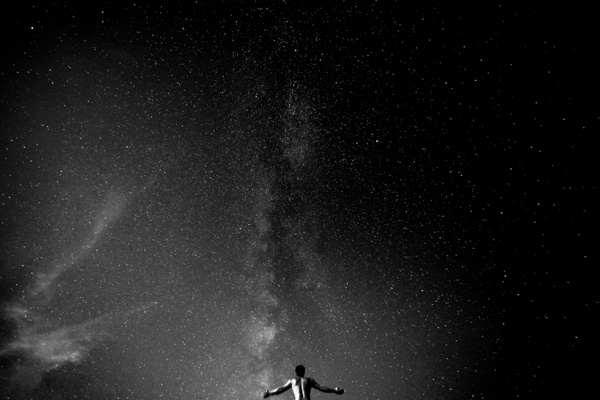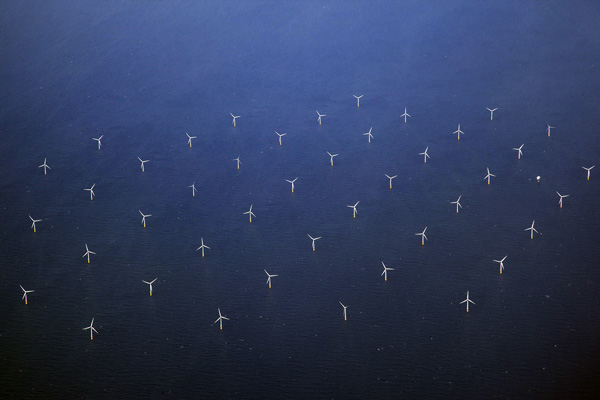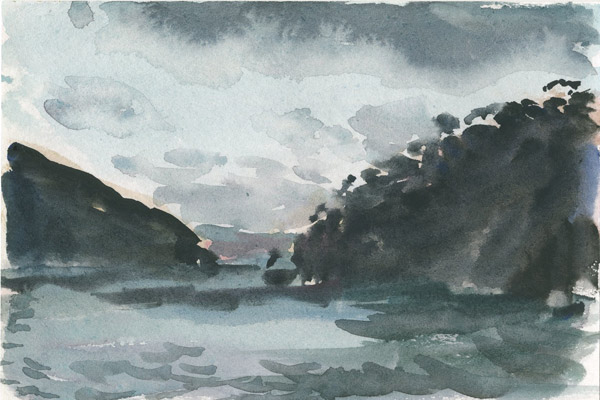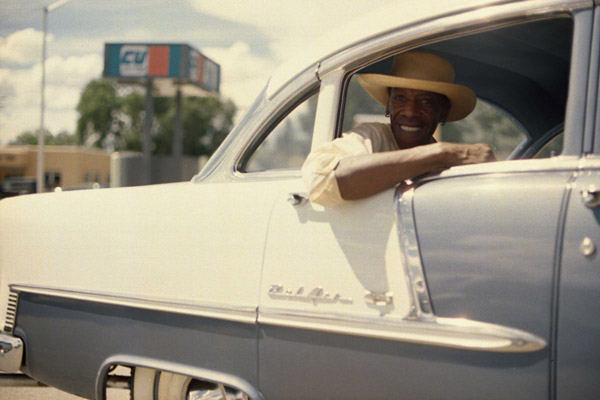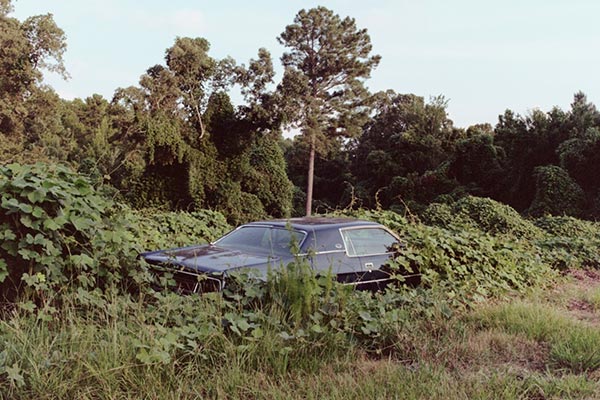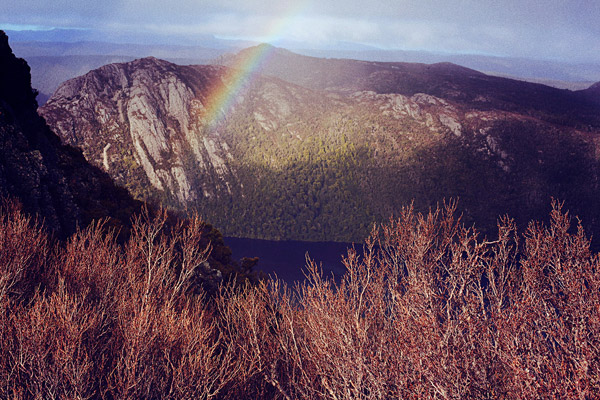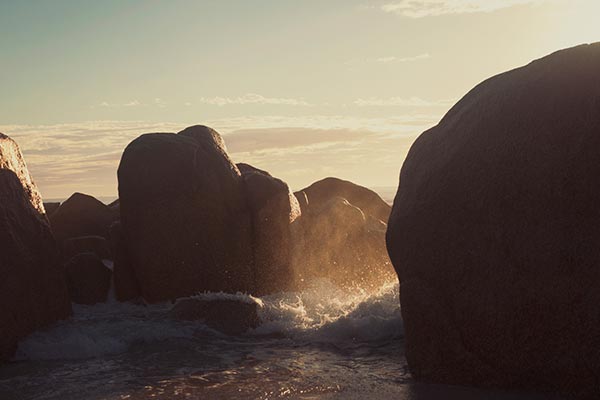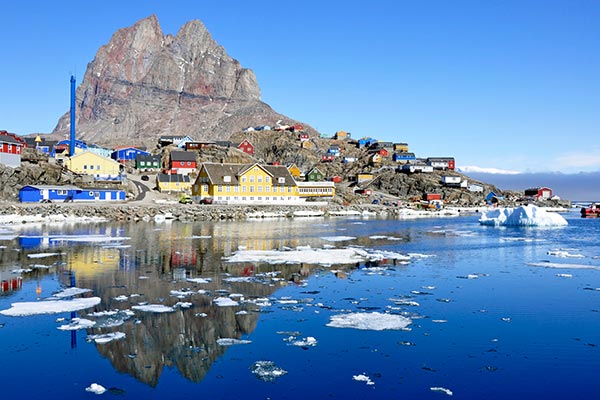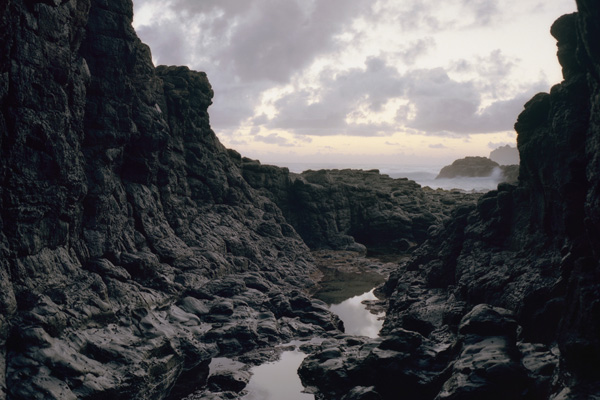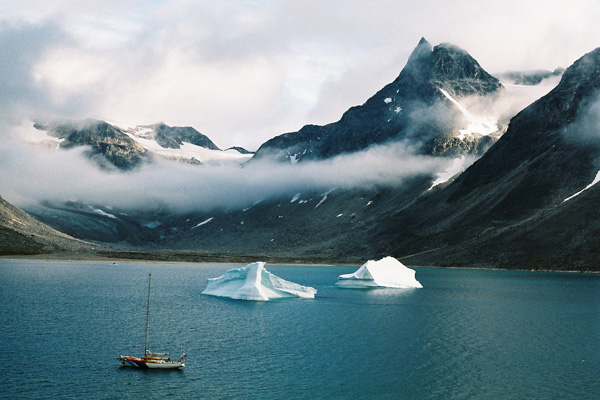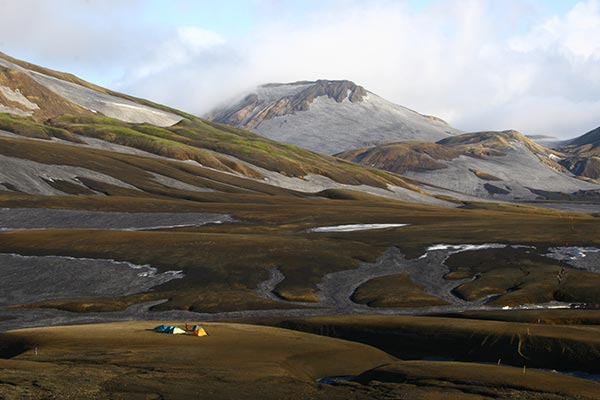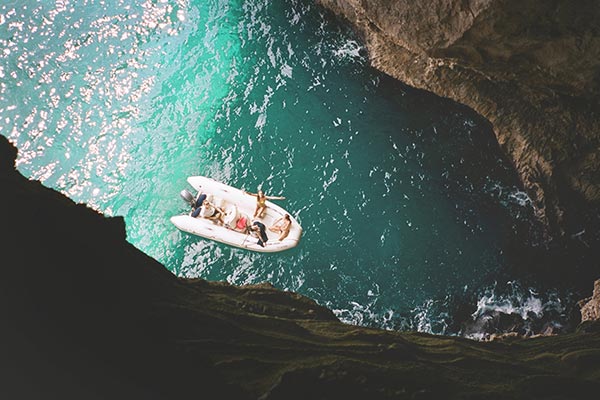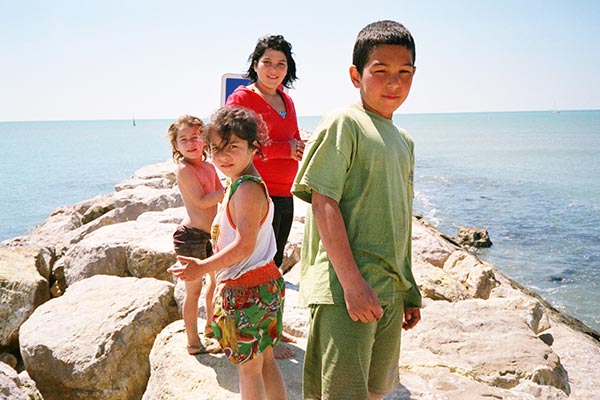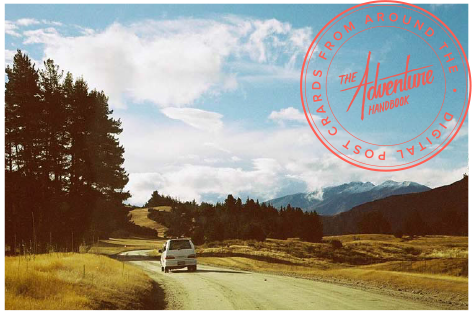Yuri Andries is a Belgian photographer driven by a curiosity into mankind’s relationship with Nature. On the intersection of fiction and non-fiction, the physical and mental, his photography explores the boundaries of what is and what could have been. His project ‘In Memory of A Monolith’ takes us to the island of Lanzarote – where in the 1730’s volcanic eruptions ended life, and left behind extraterrestrial landscapes with fertile beginnings. His project explores the history of humans dominating, invigorating, innovating but questions how evolved we really are against nature’s backdrop.
What gave you the idea to go to Lanzarote?
The purpose was to go to a different place without any concept in mind and use this new place as an inspiration for new work. As my previous series I wanted to work with the human relationship towards nature. A friend gave me the tip to study Lanzarote.
The island’s unique history and seemingly extraterrestrial landscapes are extraordinary. Imagine for a moment how a huge cloud of ashes covers the sun. Nobody knows what will happen, or how long it will last. In the pitch black, somehow, our species, human mankind manages to survive. This is what happened in Lanzarote in between 1730 and 1736.
As humans we are attracted to darkness but want to observe from a safe distance. Only when danger is close enough, we’ll use our intelligence to come up with solutions.
What was it like to travel the island? Did you have to scope out your spots prior to shooting your subjects?
First I ventured with my sketchbook. I took photos as an observer, making notes and marking interesting locations on google maps. I looked for places with few or no tourists, which was not hard at all on the island. Some places put a spell on me, like Las Malvas, which I visited countless times. The pure black beaches covered by volcano debris, the vibe around the place is intense. If you search thoroughly, you can find paths to descend into the rock formations. Once down, I decided to wait for darkness and witnessed how the fading daylight turned grey rocks into a dark-blueish glow as the sea became more hostile and threatening. A feeling of natural fear and childish curiosity overpowered me.
To have local residents as subjects is an extremely trusted position and vantage point to have. How did you go about contacting them and gaining their trust?
In the beginning I used Facebook as a tool to get in contact with residents. I met a Belgian couple in Tinajo. They were my first models on the island. Thomas lived on the island for already 20 years and as a triathlete he knew the island very good. Thanks to them I came in contact with new people who had interest in participating for the project. It was not that hard to find models. The people in Lanzarote are often spiritual and they quickly understood what I was trying to do. Approaching people in coffee bars and displaying my portfolio was in many cases enough to convince them.
These people really opened themselves up to the rawness of nature. They were naked in the cold wilderness, bruising themselves on the sharp rocks (I made them suffer). Afterwards, everyone told me what a special experience it was to be there, vulnerable, naked, out in Nature. It was a liberating feeling for some.
Sunrise and sunset are ordinary moments in everyday life. They often happen without paying attention to them. When you are out in nature, they create a totally different experience.
The series feels like a modern-day photographer was sent back in time to capture the brutal/vulnerable dawn of man, what story are you trying to tell here? Or better, what concepts are you exploring visually.
People spend their lives behind ever more intelligent screens, yet it feels artificial to breathe with naked feet in fertile soil. That is an observation, not a judgement. Time and time again over the course of history, humans created tools to domesticate, dominate, conquer, invigorate, innovate. But how evolved are we really? Our arrogant attitude towards nature is strongly opposed to the undeniable climate change. Contradictions trigger sensations, and everybody loves them. Think about the song ‘Vicarious’ from Tool. As humans we are attracted to darkness but want to observe from a safe distance. Only when danger is close enough, we’ll use our intelligence to come up with solutions. Our fears are directly related to our happiness. Just like our progress is sometimes connected to our biggest tragedies. Even though there already was a natural disconnect between the subject and the environment I went out looking for other elements in postures and lighting that further exaggerated that disconnect. The landscape was the scene to start from and I approached it as if it was a film set. First I made shots without flash with hard sunlight. I experimented and made selections, notes, looked at documentaries and science fiction movies. Only when I was back at home, I decided on the photos with colored flash – they resembled the atmosphere I was feeling when I was on the island. Six weeks later, I went back to the island, to work with more obstructions towards visual elements. But even until the last selection rounds, it was a process of search and discovery, confessions and killing darlings.
The use of gels, lighting and post-production techniques are all so particular – how hard is it to set a stage like yours out in nature?
Almost for every picture I used one flashlight with a colorgel. In places close to the equator, the sun goes down fast. Once the sun was at the right altitude, the light changed with every second. Under time pressure you have to make decisions from the stomach. And that’s sometimes much better than overthink. Post-production did not require a lot of work, except for altering some contrast and brightness. I worked with a 5D mark III & Lumporo lp180r (great flashlights!). Biggest mistake: not having an additional external battery for the flashers, making charging times sometimes excruciating painful.
You’ve chosen to shoot the series under dusk or complete darkness; removing the sense of Lanzarote being an island paradise, was this your goal?
Sunrise and sunset are ordinary moments in everyday life. They often happen without paying attention to them. When you are out in nature, they create a totally different experience. It’s a metamorphosis which you see and feel. The change suddenly becomes very real. Photography can help to capture these moments, freeze time and make us wonder. The rise and fall holds a poetic power.
Tell us about your relationship with nature as a photographer and an individual
I’ve always lived in the countryside and as a scouts boy I climbed every tree that crossed my path. My life in the city only expanded my desire for nature. There is a kind of confrontation with yourself when you go into the wildness. All your senses start to work better. When traveling it may be a millstone around the neck for some, but my camera is helping me to look even better.
Anything else?
Do not attempt to find unambiguous meaning in this work. It’s the unknown and our will in wanting to understand, that I find very interesting. I especially hinted towards certain films and writers. But these Easter eggs are for the viewer to find. Recently someone asked me if I was inspired by the work of Lovecraft. “The oldest and strongest emotion of mankind is fear, and the oldest and strongest fear is fear of the unknown.” — H.P. Lovecraft
Receive a postcard from us sign up




